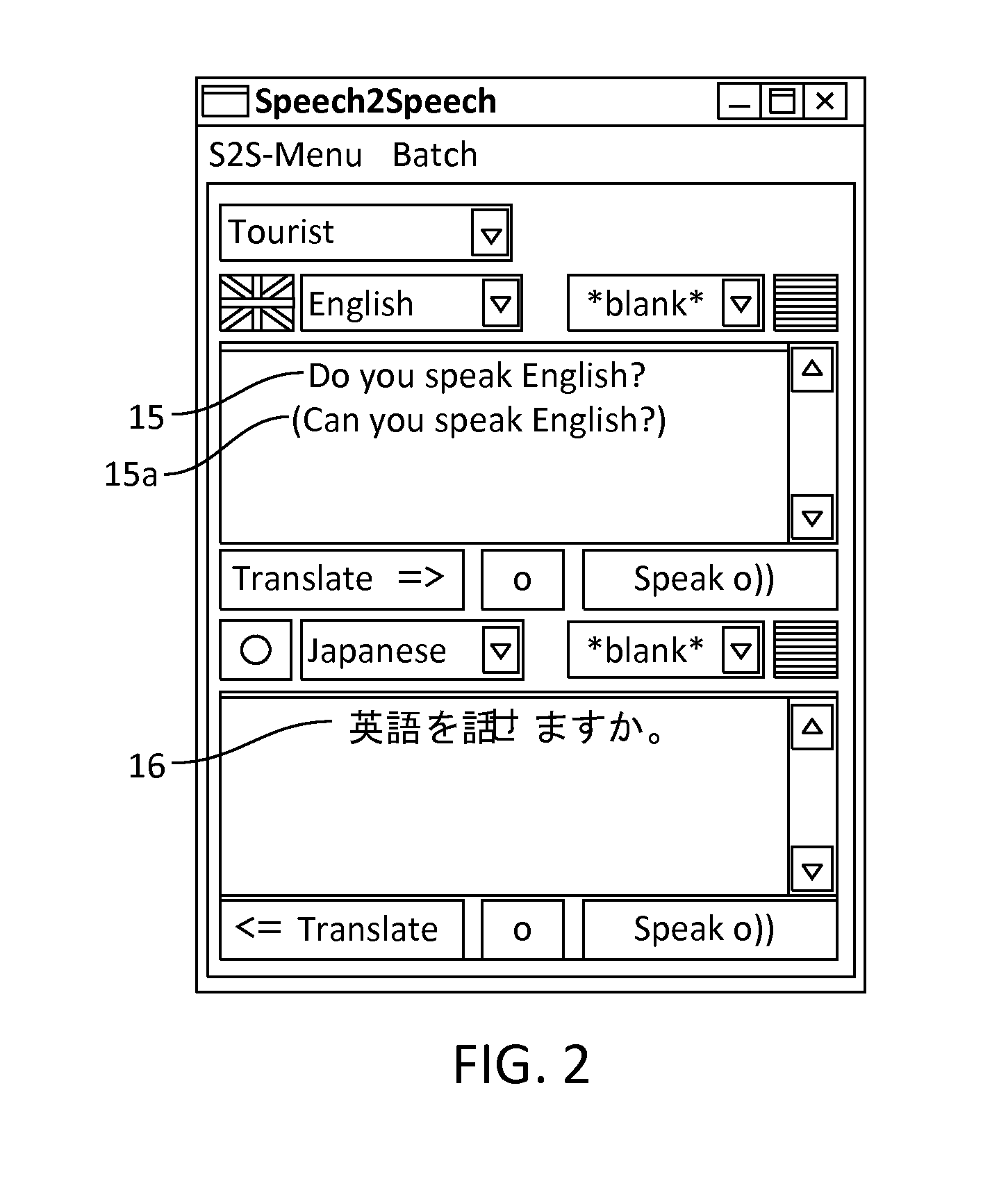Translation system information extraction
a technology of translation system and information extraction, applied in the field of speech translation system, can solve the problems of communication breakdown, actual words and language usage deviating from the anticipated scenario of the laboratory, and the operation is limited, and achieves the effect of enhancing the usability of speech translation system
- Summary
- Abstract
- Description
- Claims
- Application Information
AI Technical Summary
Benefits of technology
Problems solved by technology
Method used
Image
Examples
Embodiment Construction
[0043]Various embodiments of the present invention describe methods and systems for speech-to-speech translation. Embodiments may be used to adapt to the user's voice and speaking style via model adaptation. In further embodiments, the user can correct recognition errors and the system can explicitly learn from errors that the user corrected, thereby making it less likely that these errors occur again in the future. The present invention enables the user to customize the vocabulary to his or her individual needs and environment by either adding new words to the system, or selecting predefined dictionaries that are optimized for a specific location or task. When adding new words a multimodal interface allows the user to correct and verify automatically generated translations and pronunciations. This allows the user to add new words to the system when the user has no knowledge of the other language. In an embodiment, the system is further configured to transmit any new vocabulary inpu...
PUM
 Login to View More
Login to View More Abstract
Description
Claims
Application Information
 Login to View More
Login to View More - R&D
- Intellectual Property
- Life Sciences
- Materials
- Tech Scout
- Unparalleled Data Quality
- Higher Quality Content
- 60% Fewer Hallucinations
Browse by: Latest US Patents, China's latest patents, Technical Efficacy Thesaurus, Application Domain, Technology Topic, Popular Technical Reports.
© 2025 PatSnap. All rights reserved.Legal|Privacy policy|Modern Slavery Act Transparency Statement|Sitemap|About US| Contact US: help@patsnap.com



